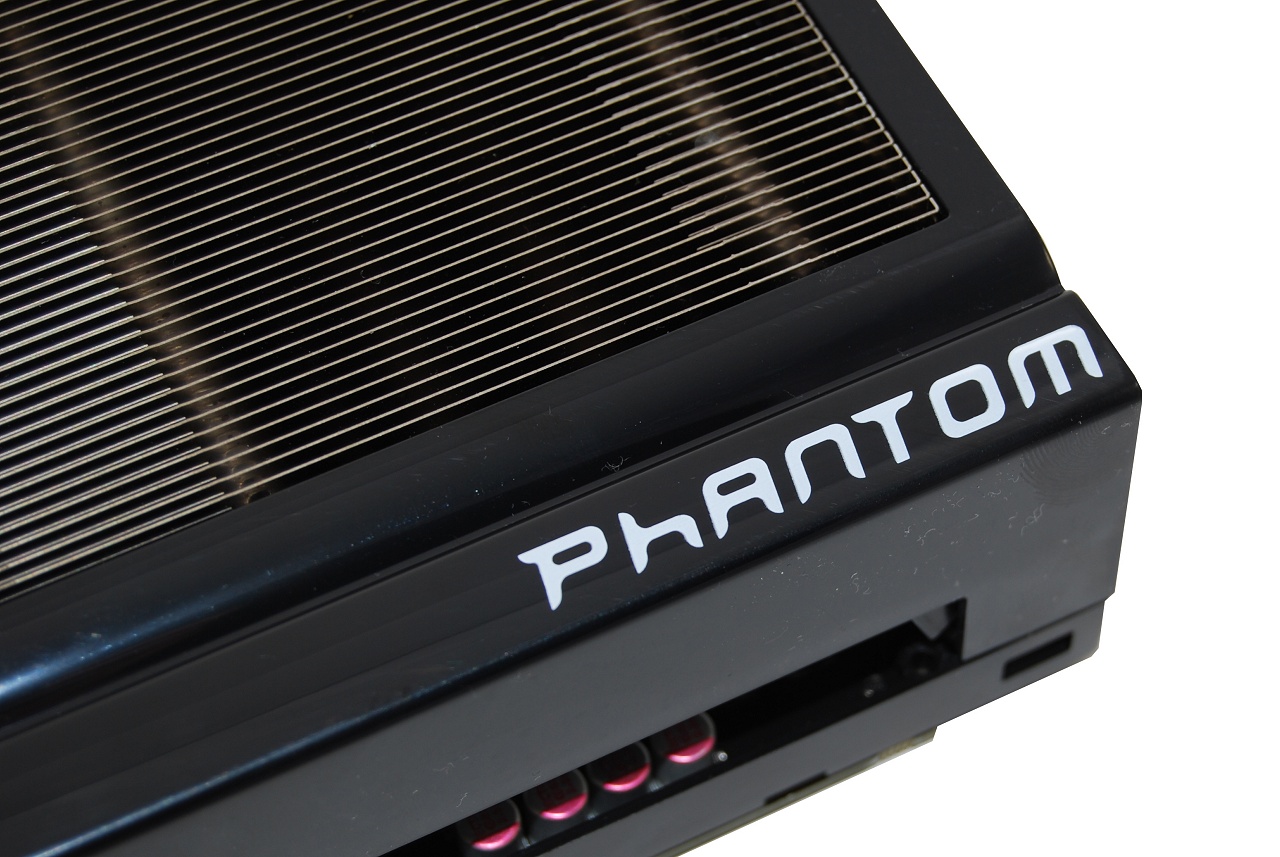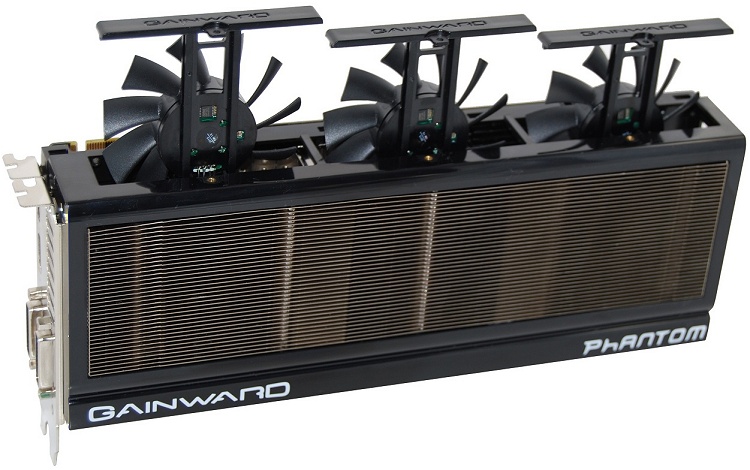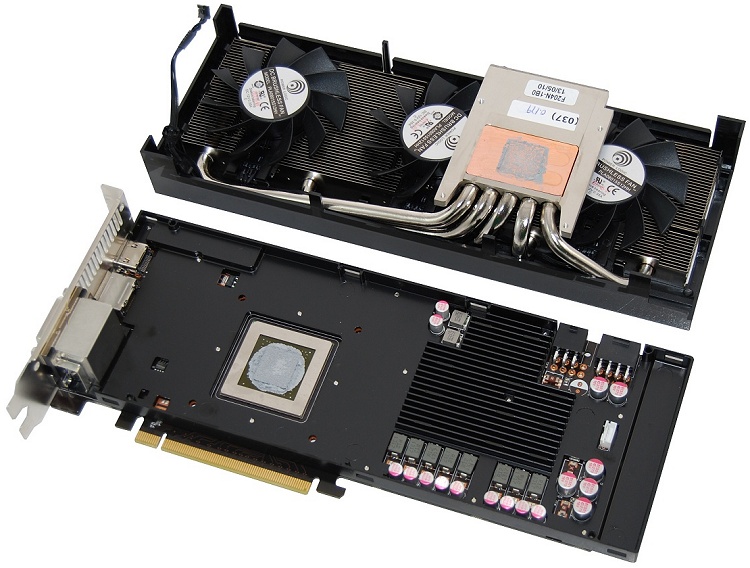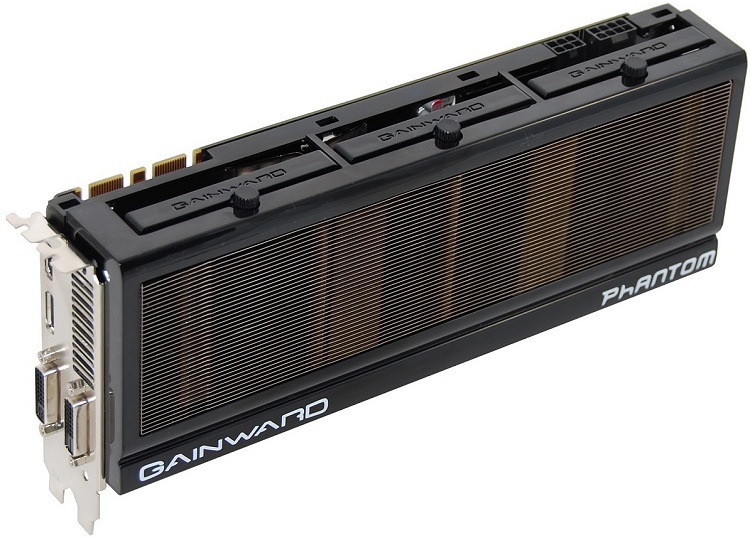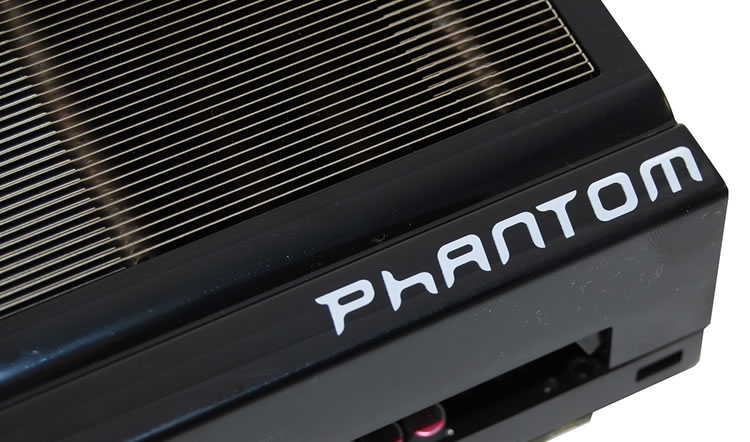Having taken the covers off the GeForce GTX 780 a week ago, Nvidia is ready to release their next part in the GeForce 700 series. Giving us our first look at the GeForce GTX 770 is Gainward, with their special Phantom edition card featuring an upgraded cooling solution, factory overclocking, and 8-phase PWM.
But let's put things into further context. The GTX 780 that debuted last week was based on the same Kepler GK110 architecture used by the GTX Titan. Nvidia priced the GTX 780 at $650, making it 35% cheaper than the GTX Titan but also 40% more than the GTX 680. In terms of performance, the GTX 780 was only 10 - 15% slower than the Titan, so it added value to an otherwise very exclusive price point, however when compared to the GTX 680 the numbers were less impressive as the GTX 780 was just 24% faster.
Therefore the GeForce GTX 780 is an attractive option for those wanting Titan-levels of performance at a more moderate price, but in the overall scope of things, the 780 was hardly exciting news for the vast majority of gamers as it remains a very expensive affair and the release did nothing to drive down prices of previous generation cards.
Looking forward to the GeForce GTX 770's release, we were hoping this would be a little more meaningful for the gaming community. The GTX 770 is based on the GK104 architecture, first used by last year's GTX 680. Earlier rumors indicated that the GTX 770's specifications would be much like a GTX 680 on steroids, and as it turns out that's exactly what it is. Virtually everything about the GTX 770 and GTX 680 are the same, except for core and memory clock speeds.
The GTX 770 features the fastest GDDR5 memory we have ever seen at 7GHz. Memory at that clock rate is good for a peak bandwidth of 224GB/s, 16% more than the GTX 680. Therefore, technically if you could overclock a GTX 680 well enough you could create a GTX 770.
GeForce GTX 770 Phantom in Detail
Gainward has prepped their Phantom card in time for the GTX 770 release, touting a reworked PCB with an upgraded power phase, factory overclocking and a massive triple slot cooler – the last of which is the most noteworthy enhancement. Although Gainward featured its Phantom cooler on some GTX 600 series cards, the GTX 770 is the first to market with the company's third-generation solution.
The new Phantom delivers better thermals while making less noise and boasting of a sturdier construction. It's unlike any triple-slot cooler we've encountered before. It features five 8mm heatpipes that extract heat from the base and evenly distribute it throughout the heatsink.


The most unusual part of the cooler design is the fans, or rather their location. Fans are typically attached to the top side of the heatsink, but instead Gainward has embedded three quiet 80mm brushless PWM fans inside the heatsink. The fans are also removable, featuring a tool-less design. Similar to the way hot-swappable hard drive bays work, the fans slide out once a single thumb screw has been removed, no cables, no fuss.
The heatsink measures 257mm long, 65mm wide and 45mm tall. It features a black fan shroud that forces the 80mm fans to draw air in through fins above them and push it over the card below them at the same time. Moving past the heatsink is a black aluminum heat spreader that engulfs the top side of the card and cools the eight 256MB GDDR5 memory chips along with the 8-phase PWM.


By using a 8-phase design, Gainward includes two extra phases for power delivery to the GPU, which should improve performance under heavy loads and aid in the card's overclocking abilities. Speaking of overclocking, Gainward has done a little bit of the heavy lifting by pushing the core clock from 1046MHz to 1150MHz, a decent 10% increase, while the Boost Clock is increased from 1085MHz to 1202MHz, an 11% increase. The GDDR5 operating frequency has been left at 7GHz meaning the memory bandwidth remains at 224.3GB/s.
As mentioned before, beyond clock speeds the GeForce GTX 770's specifications are identical to the GTX 680. This means there are 4 graphics processing clusters, 8 streaming multiprocessors, 1536 CUDA cores, 128 TAUs and 32 ROPs. The rest of Gainward's card remains fairly standard, including a pair of SLI connectors, 6-pin and 8-pin PCIe power connectors, and an I/O panel configuration consisting of HDMI, DisplayPort and two DVI ports.
